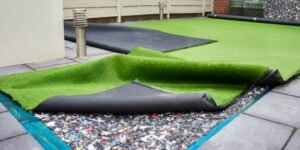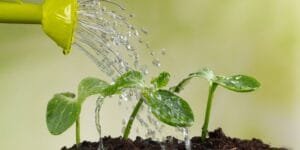Landscaping entails the creative art of increasing the beauty of caring for your gardens or outdoor spaces, modifying the existing topography, and constructing features to make such areas functional and attractive.
Naturescaping is fundamentally a return to the source of creative landscaping, in both literal and metaphorical senses, with native plants being part of this approach. Native plants are locally occurring, and therefore, they have adapted over time to the climate and soil in the local area. That is why they are considered an ecologically responsible option for yards and gardens.
What is Naturescaping?
Landscaping for nature is about designing and working with native plants to create a sustainable and beneficial environment for wildlife. It is not an aesthetic but a prompt to plant the species native to the locale for a healthier ecosystem.
The selection of native plants will assist in protecting biodiversity and supporting local fauna, such as bees, butterflies, and birds, which depend on seeing familiar species for food and shelter.
Naturescaping vs. Traditional Landscaping
The vast majority of these aesthetic, traditional landscapes will undoubtedly incorporate exotic or non-native plants, which require heavy irrigation, fertilization, and pesticide application to look good and maintain plant health.
In general, resource-dependent care raises the cost of maintenance, and excessive use can cause grave environmental degradation over time. For example, such practices quickly lead to soil erosion and water pollution when the chemicals drain and affect local water bodies and their ecosystems.
On the other hand, with well-adapted native plant choices in naturescaping, sustainability, and ecological concord can be maintained. Most native plants are more resistant to drought, diseases, and pests; therefore, there is a significantly reduced need for chemical intervention.
Naturescaping not only economizes on water usage but also enhances healthier soils by using native species that make a garden more resilient and ecologically responsible. This approach to landscape design allows for more sustainable interaction with nature while ensuring the appealing conservation of local vegetation and fauna.
Why Create a Native Plant Lawn?

Many benefits make the native plant lawn superior to the typical grass lawn. It substantially reduces the need to water, fertilize, and spray pesticides. Native plants efficiently pool water and nutrients, thriving in local conditions suited to them.
Native plant lawns also provide an essential wildlife habitat, especially for many pollinator species whose populations continue to decline. They foster a diverse ecosystem from which homeowners benefit: a vibrant and dynamic landscape that positively contributes to the local ecology.
How do you replace your lawn with native plants?
Native plants could replace lawn grass transformations into attractive gardens and increase biodiversity and ecological health. To prepare for this transformation, conduct extensive research on native species that suit your area’s climate and soil type, ensuring early planning and readiness. Examine how much sunlight, moisture, and soil pH in your yard so you can install new home plants that will do well in that environment.
The following process is killing off the sod, which a few different methods can achieve. One way is solarization; using the sun’s power to kill off weeds and grass is known to be friendly as it traps heat under a transparent plastic sheet.
Another way is to use an organic herbicide to reduce the chemical impact on the environment. Once you remove the turf, prepare the soil by adding organic matter to improve the soil structure and fertility, which is vital for the healthy growth of native plants.
Plant layout design is one of the most defining procedures in your new garden. Group plants with similar needs for water and light support each other’s development through microhabitat.
Begin with a selection of foundation plants, shrubs, and native grasses, and afterward, add some flowers and ground covers to create a multilevel effect with color. Ensure appropriate spacing for each plant to accommodate its growth potential; this will minimize the need for future pruning.
After planting the plants, mulch them with organic material. This organic matter holds soil moisture, suppresses weed growth, and adds nutrient content as it decomposes. Therefore, this step is vital in maintaining soil health and moisture without frequent watering.
Naturescaping is the green, beautiful way to go; traditional landscapes just can’t keep up. Landscaping with native plants means making an ecological commitment that has practical benefits.
For landscape lovers who wish to give their outsides a tune-up, Blades of Glory Landscaping is here for expert services in designing and installing picture-perfect native plant lawns. With their learning and acquired experience, they are in an excellent position to be of further help in creating a garden that not just survives but also accommodates the local ecosystem, therefore making room for the same.
To take this journey, join Blades of Glory Landscaping as we help you grow larger and kinder daily with the beauty and benefits of naturescaping.






